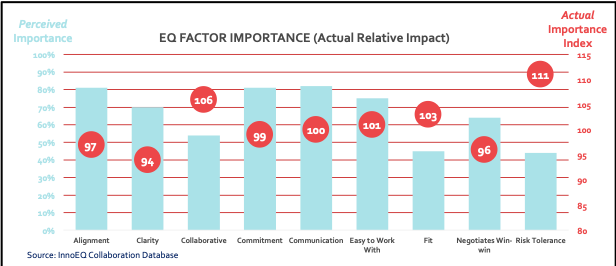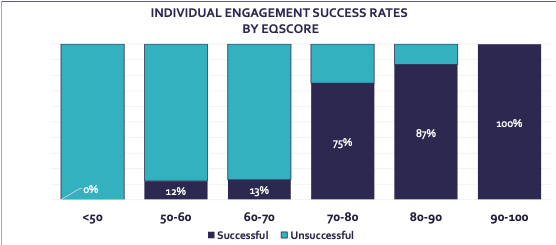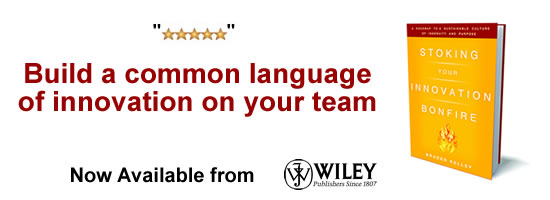Planning for the Most Important Customer of a Corporate Innovation Program

Top corporations spend almost $825Bn on innovation, yet 19 out of 20 innovation efforts fail. Given its (often existential) importance and focus, why is innovation success so scarce? (Source: 2018 BCG Global Innovation Survey, 2019 PitchBook study)
One reason is that innovation teams, even those using the most customer-centric development approach, often fail to adequately plan for their most important prospect: the internal customers that ultimately determine if the initiative will make it to market.
Internal sell-in isn’t as simple as getting the CEO or any other single senior-level champion on board (though that’s a good start). Success often depends on corralling internal resources, industry expertise, brand equity and customer relationships for competitive advantage and speed to market. Individuals who may feel personally threatened by the innovation (a real or perceived threat) can become gatekeepers who actively or passively-aggressively slow progress. They may also be distracted on “higher priorities†just when you need them the most.
Whether you lead an internal design team, corporate venture capital, work with an external startup incubator, or are working alongside an innovation advisor, you will likely face these issues and challenges navigating a large organization.
Here are three basic steps you can take to improve your chances of success.
1. Know your Company’s Persona
We conducted an in-depth study of over 150 innovation initiatives to understand how a company’s culture and collaboration skills impact ultimate outcomes. We found that respondents believed that goal alignment, cross-company and partner collaboration, and open communication were the most important attributes. However, when linking performance to actual outcomes, we found that a corporation’s risk tolerance was the number one driver of success. (Figure below)

Furthermore, a weighted score across nine specific variables accurately predicts how successful the company will be with innovation generally and the chances that any one individual initiative will work (Figure below)

Every company has a unique persona, and even departments within a large company will have a unique profile.
As you start your innovation initiative, take stock of your company and assess its profile on these attributes. A good understanding for your organization’s culture will allow you to proactively plan for and manage the pitfalls and internal challenges you will face along the way.
2. Practice Empathy
Innovation almost always involves multiple individuals in multiple functions. Your buyers and your users may be different people that have different needs. Multiple staff functions, such as accounting, IT, legal and purchasing may have approvals and a say in requirements, build/buy/partner, and go-no go decisions. They all have their own individual objectives, many of which may conflict with your innovation plans.
Selling innovation internally is an enterprise sale. It requires the same standard enterprise product marketing processes, only with an inward focus. Just as you would do with your external customers, it is important to profile your internal customers and plan for how you will win them over as champions and supporters. Don’t wait until the end to get started. Anyone familiar with corporate life knows that this can process take time, a lot of time, and it can be extremely complicated. You will be much better off if you and your program team are planful, structured and start early in the innovation process.
3. Lower the Risk
As noted above, adequate risk management is the single greatest predictor of whether your innovation will succeed or fail. Therefore, build your internal go-to-market plan to ensure your initiative presents an acceptable and manageable risk to the company and for all the individuals who will be involved. Here are three specific actions to take:
- Rather than trying to go from zero to one hundred in 6 seconds, “Land and Expand†is a great approach. Go for the quick wins early to start projecting the ultimate value. If all goes well, you will be enlisting internal champions along the way that can help at the next step.
- Plan ahead for risks and challenges. Align your plans to your company’s culture and innovation maturity. Aim for maximum visibility. This will help broaden your internal customer base, and ensure initiative continuity as people, roles and priorities change.
- Rethink what it means to test your innovation. Here’s a good way to think about it: “A (pilot/test/POC) gives you and your champions the evidence you need to sell your product to other people in the organization.†Insure that the pilot outcomes and metrics are going to be meaningful measures of success and will resonate with other buyers.
These actions can significantly lower the risk for all the internal individuals directly and indirectly involved. More data, more wins and continuous improvement demonstrate to your stakeholders the benefits innovation offers to them personally, and provides them comfort that you are accounting for their success as well as yours.
Conclusion
As any good marketer or salesperson will tell you, if you are going to sell in a new idea, it helps to know your customer. As an innovator, no doubt you will spend countless hours trying to understand your end customer and glean unique insights into their needs so you can deliver a great product or service that adds tremendous value. Making similar effort to understand and market to your most important customer – your own company – will be time well spent.
Image credit: Pixabay
Wait! Before you go…
Choose how you want the latest innovation content delivered to you:
- Daily — RSS Feed — Email — Twitter — Facebook — Linkedin Today
- Weekly — Email Newsletter — Free Magazine — Linkedin Group
 Michael Himmelfarb shows companies of all sizes how to be more successful with corporate-startup engagement. As Co-Founder of InnovationEQ, he helps large enterprises increase their Innovation Engagement Intelligence – the crucial cultural and operating soft skills that are proven to predict innovation success. He serves as strategic advisor to dozens of B2B SaaS startups trying to perfect their winning strategy for corporate customer engagement.
Michael Himmelfarb shows companies of all sizes how to be more successful with corporate-startup engagement. As Co-Founder of InnovationEQ, he helps large enterprises increase their Innovation Engagement Intelligence – the crucial cultural and operating soft skills that are proven to predict innovation success. He serves as strategic advisor to dozens of B2B SaaS startups trying to perfect their winning strategy for corporate customer engagement.
NEVER MISS ANOTHER NEWSLETTER!
LATEST BLOGS
Three things you didn’t know about credit cards
Photo by Ales Nesetril on Unsplash Many of us use credit cards regularly. From using them for everyday purchases to…
Read MoreFive CV skills of a business-minded individual
Photo by Scott Graham on Unsplash The skills listed on a CV help employers quickly understand your suitability for a…
Read More


